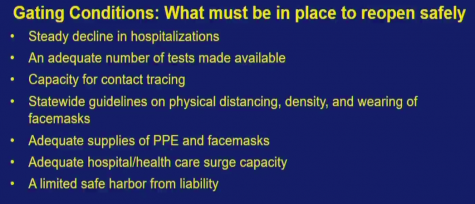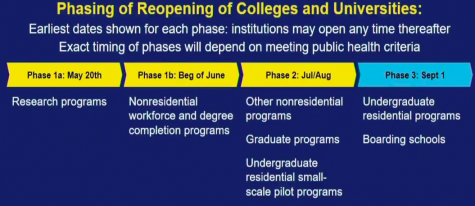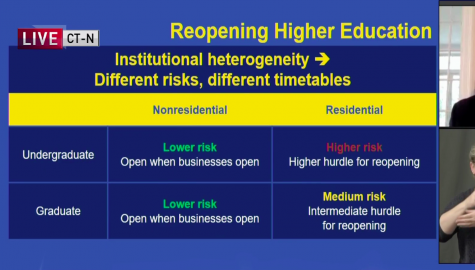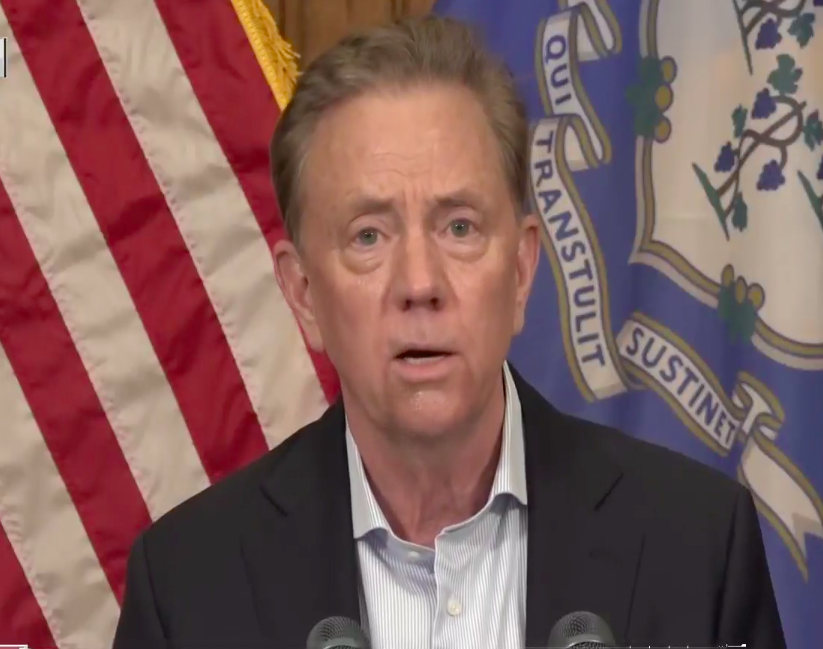The status of higher education for the 2020-2021 school year as of now
Governor Ned Lamont announced Wednesday that he has received the report from Connecticut’s Reopening Education Committee detailing recommendations on how institutions can reopen for the fall.
The recommended sequencing of the reopening of colleges and universities would be as follows:
- Research programs and administrative functions will be able to open on the same timetable as the first wave of general business operations in the state, which is currently set for May 20.
- Next, early in the summer, workforce development programs in institutions such as community colleges may reopen. As part of their reactivation, they will welcome back those students who were unable to complete courses with lab, studio, clinical, or shop requirements for their degrees this spring.
- By mid-July, other nonresidential educational programs might be reopened if public health conditions continue to improve, and some institutions may want to resume graduate programs. A few summer programs involving undergraduate students in residential settings might be piloted.
- By the end of the summer in preparation for the fall semester, if prevailing health conditions make it possible, undergraduate residential institutions may reopen if they choose.
“Given the heterogeneity of our colleges and universities, one size won’t fit all, which is why we need carefully tailored guidelines for differing parts of this sector,” Lamont said. “This framework to reopen our higher education institutions is a vital component of our overall plan to reopen Connecticut.”
The committee outlined different phases for the opening of Connecticut colleges and universities. They also recommend that the Governor, along with health experts, provide gating conditions that would allow colleges and universities to reopen their campuses safely.
Some of the gating conditions according to the report are:
- The prevalence of the disease must be low enough to safely resume campus operations.
- The state must ensure that colleges and universities have adequate supplies of viral diagnostic tests and adequate financial support to obtain, administer, and process them.
- The State should enable institutions to have adequate capacity for contact tracing.

The full list of gating conditions can be found in the Report of The Higher Education Subcommittee.
The subcommittee also recommends that each institution develops reopening plans with these four components.
- A plan for repopulation of the campus
- A plan for monitoring health conditions to detect infection
- A plan for containment to prevent the spread of the disease when detected
- A plan for shutdown in the event it becomes necessary
According to the press release, “The reopening of any higher education institution will need to be phased based on the varied nature of the activities on its campus.”
The phases include:

These phases are contingent upon COVID-19 cases going down or going up. Former President of Yale University Rick Levin and Co-chair of the education committee of the Reopen Connecticut Advisory Group said, institutions should be flexible in case numbers spike up and the Governor has to issue a state shutdown.
The report also indicates that residential colleges present a higher risk because of the number of students that are on campus on a daily basis.

According to the report, many residential institutions may need to limit the number of students who can return in order to avoid overcrowding living quarters, bathrooms, dining halls, and classrooms.
Social distancing and the wearing of masks will still be practiced at these institutions when they open for the next school year. The committee also advises professors over the age of 60 to think about teaching remotely because of their increased risk of getting COVID-19.
Quinnipiac University officials will be presenting their plan regarding next semester to the Quinnipiac community by mid-May.



